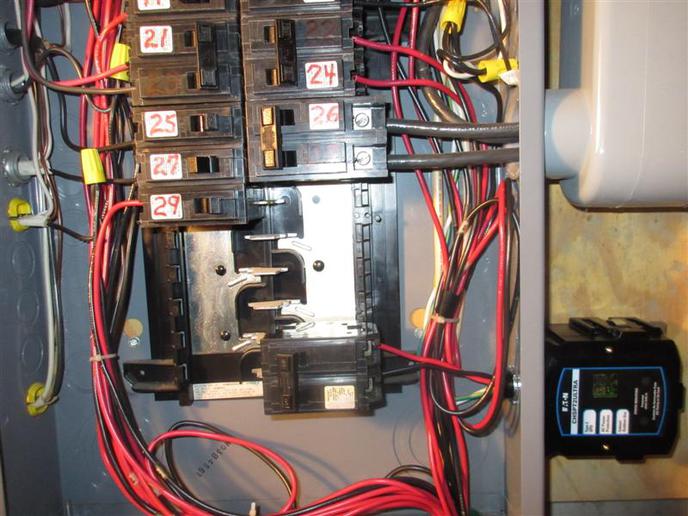(quoted from post at 13:31:51 04/10/15) We built or house in 1980 and they came out with those just after we built the house. With that you can do away with all the other surge protectors you have in the house.
Whole house protector is how it has been done in facilities that cannot have damage; for over 100 years. This stuff is not new. But it is new to consumers whose information comes mostly from advertising.
Those plug-in protectors do not even claim to protect from destructive surges. A destructive surge might be hundreds of thousands of joules. How many joules does that plug-in protector claim to absorb? Hundreds? Surges that tiny are routinely made irrelevant by protection already inside all appliances. Those protectors are also so tiny as to sometimes create fires. Yes, be concerned. Because plug-in protectors also require protection provided by a 'whole house' protector.
Effective protectors are for all surges. A direct lightning strike may be 20,000 amps. So a minimally sized 'whole house' protector is 50,000 amps. Because no surge damages properly sized protectors.
The Cutler-Hammer is but one example. 'Whole house' protectors are provided by a long list of manufacturers known for their integrity including General Electric, Square D, Syscom, Intermatic, Polyphaser (an industry benchmark), Ditek, ABB, Siemens, and Leviton. Not listed are Belkin, Panamax, Tripplite, Monster, and APC.
Schneider Electric recently purchased APC. Then discovered some protectors were so badly designed as to be removed immediately - due to fire. They are called surge protectors. But some are only for surges that typically cause no damage - such as noise from other appliances. Concern is a rare transient that can overwhelm superior protection already inside appliances.
A different is obvious. 'Whole house' protectors in a breaker box, in a meter pan, or installed by the utility would have a low impedance (ie 'less than 10 foot') connection to earth ground. Protectors never do protection. Read that again. Protectors are only connecting devices to what does protection: single point earth ground. Those power strip protectors have no earth ground and will not discuss it. A protector is only as effective as its earth ground.
Every layer of protection is defined by what harmlessly absorbs hundreds of thousands of joules - a critically important number. Best protection for cable TV is a hardwire from that coax to earth - again low impedance. No protector required.
Telephone wire cannot connect directly to earth. So your telco has installed a 'whole house' protector for free. That protector is only doing what the hardwire would do better. Because protectors are only connecting devices - are not protection.
Earth ground defines protection. But it must be "single point earth ground". Separate grounds means a protector may even make surge damage easier.
The 'whole house' protector is the 'secondary' protection layer. That protection layer is defined by what does protection - the earth ground. You are also encouraged to inspect your 'primary' surge protection layer. A picture demonstrates what to inspect:
http://www.tvtower.com/fpl.html
Finally, little difference is between overhead and underground service wires. All incoming utility wires (overhead and underground) need same and properly earthed protection.



